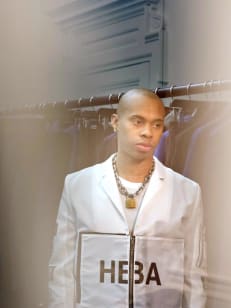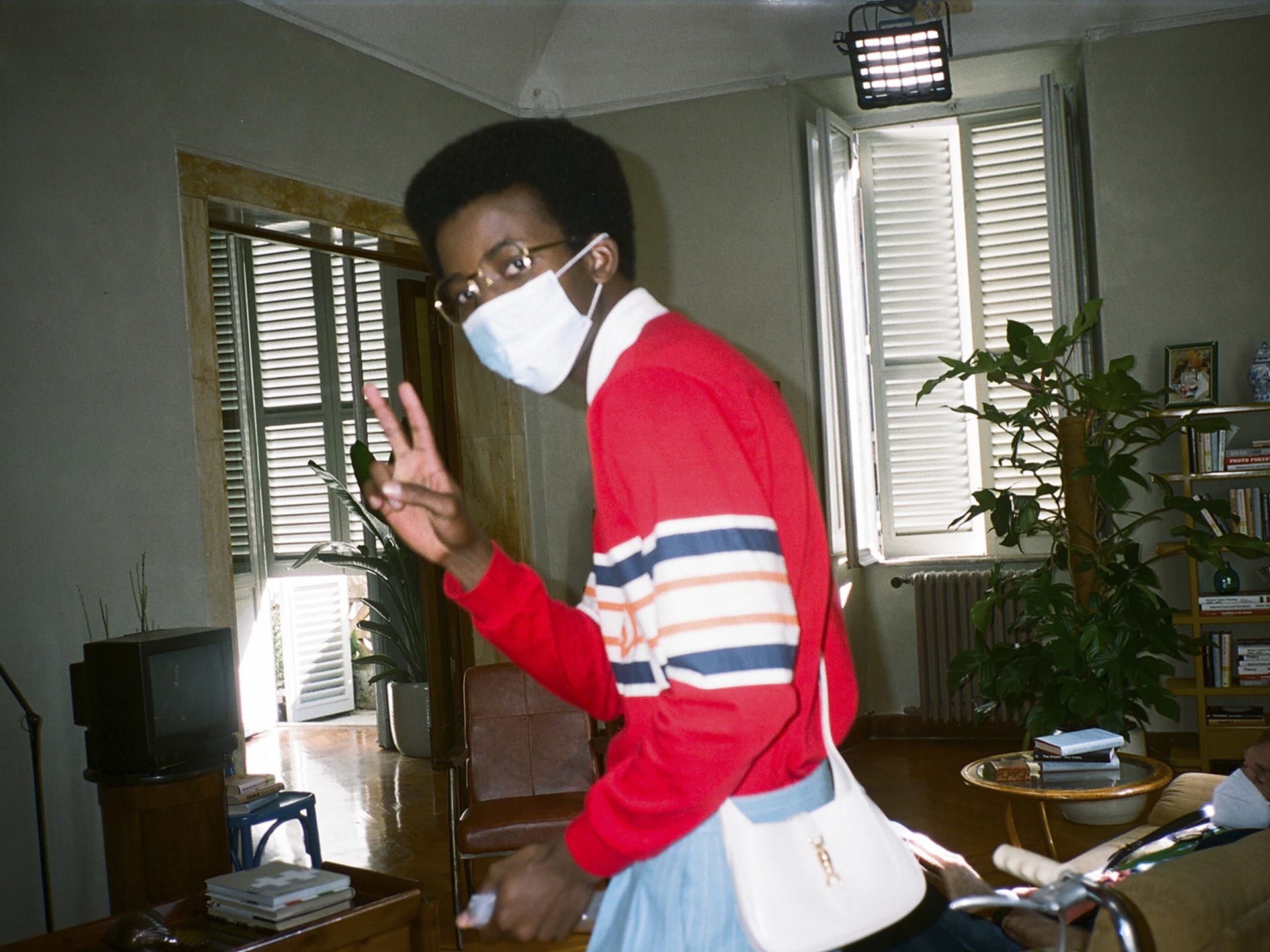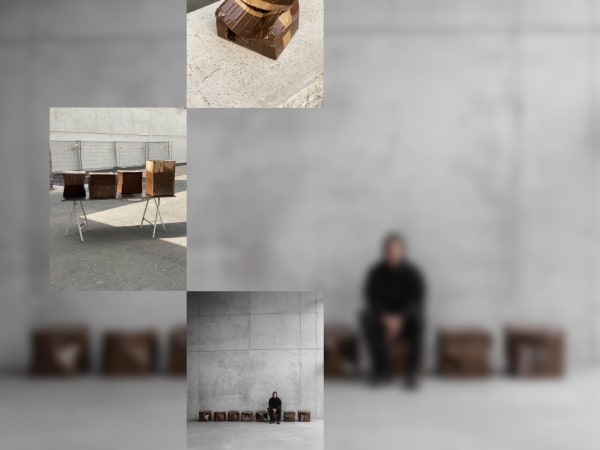

GucciFest Illuminated Fashion’s Intersectionality
In place of a traditional runway show, the brand presented its new collection as an online film festival featuring works by 15 designers and music from Billie Eilish, TYGAPAW, and more.
World-building is as ubiquitous an idea in explanations about contemporary fashion collections as it is in the parlance of video game designers and 3D animators. It’s not enough to just present a thoughtful and well-tailored collection of garments anymore, especially now that social media allows designers to expand on their runway shows in a multitude of creative ways—to be directly broadcasted into the small, glowing screens of our phones.
Case in point: Loewe’s most recent collection, in which designer Jonathan Anderson showed his voluminous, puff-sleeved dresses and even more capacious pants in the format of a life-size poster kit, replete with wallpaper by British artist Anthea Hamilton, a pair of scissors, glue, and a brush, so you could build the visual portrait yourself. It wasn’t just a novel exercise to brighten up what most would call gloomy times, to say the least—Anderson supplemented the unconventional collection with a series of visuals on Loewe’s YouTube channel, including a short documentary in which Hamilton discusses her creative process and a video of musician Kindness directing an interpretation of a 40-part Renaissance motet. In yet another clip, you can watch an artisan stamp the Loewe anagram onto the corner of the suede-lined leather panel that she fashions into one of the bags in the new collection.
Building out the narrative of a show with supplementary content isn’t necessarily breaking new ground. Grace Wales Bonner’s meticulously researched collections (which she presents with a full-out reading list), for example, spin off into meditative, multimedia events grounded by performances by artists like Solange and gallery exhibitions that feature a conglomeration of shrines that tie together mystic practices of the Black Atlantic. But GucciFest, the online film festival that Alessandro Michele just unveiled piece by piece last week in lieu of a conventional runway show, takes this practice of world-building around new fashion collections to new heights. It’s not just a rendering of the dreamlike depiction of metropolitan Italy that Michele’s romantic designs feel pulled from—it’s a broader portrait of the future of fashion, as emerging designers like London’s Mowalola, Chinese designer Rui, and New York-based Collina Strada crafted their own videos to more deeply carve out the distinct worlds of their designs.
This element will show content from various video platforms.
If you load this Content, you accept cookies from external Media.
GucciFest centers around an episodic collaboration between Michele and director Gus Van Sant, titled “Ouverture Of Something That Never Ended,” which charts the average day of a woman named Silvia, following her from the thrift shop to the post office and finally on her nighttime walk. The film brings in familiar faces to the Gucci universe, like Harry Styles, Florence Welch, Billie Eilish, and playwright Jeremy O. Harris, as well as those that aren’t as readily recognizable: Italian actress and performer Silvia Calderoni stars as the protagonist of the entire series and writer, philosopher, and gender theorist Paul B. Preciado makes an appearance, proclaiming that revolution will be about love while Calderoni does her morning yoga in the living room of her idyllic Roman apartment.
Though Michele and Van Sant’s collaboration doesn’t quite shape up to anything more than a visually compelling fashion film, in spite of some of the headier threads woven throughout (like Preciado’s radical gender theory or the visual language of choreographer Sasha Waltz, whose work blurs together the boundaries between individuals), it is uncanny to see a post office populated by lithe models decked out in Gucci from head to toe, turning the most mundane site imaginable into a showroom for Michele’s ornate designs.






The film is also a conduit for some memorable music moments. Kim Gordon’s compositions bookend the entire series, her reverb-drenched guitar playing in the background as Silvia wakes up and feeds her goldfish, and “50 Shades of Green,” a song that never made it onto her solo record, plays at the end of every episode each time the credits role. In a conversation with filmmaker Miranda July following the series, Gordon said that she originally wrote the latter song for her solo record about the light in Los Angeles. It didn’t end up making the cut then, but the dusky Roman light proved a fitting replacement.
For those too young to have experienced Sonic Youth’s halcyon days, Billie Eilish and Harry Styles each make appearances in the films. Eilish appears later in the series, dressed in a Gucci beret and red track pants, although her music is teased in the first episode in a dramatic scene when Silvia casts off a flowy dress from a balcony. In around the six minute mark in Episode 5 (featured above), Eilish sits poolside in what appears to be Los Angeles as her new icy pop song “Therefore I Am” rings out as little yellow robots dance around her. Harry Styles’s contribution is more philosophical than musical—he waxes poetic on the strangely uncomfortable experience of making art in conversation with Italian art critic Achille Bonito Oliva, who in turn breaks down his thoughts on different mediums. To Oliva, fashion dresses humanity, art lays it bare, and music is a massage for the tired muscles of collective awareness. He proclaims that we’re in an age of intermingling that’s foregrounded by both a lack of faith in the future and in a more vital appreciation of the present.
This element will show content from various video platforms.
If you load this Content, you accept cookies from external Media.
It’s in this consideration of futurity where GucciFest succeeds the most: the shorts that the emerging designers contributed prove more convincing than Michele and Van Sant’s collaboration in paving the way for a future where designers can once and for all move beyond fashion industry norms. Some of the films eschew human models, or even tangible garments, for full-out animation. In Collina Strada’s joyful 3D rendering, avatars run around and plant virtual trees among gentle dinosaurs and smiling cacti in a desert landscape, and in Mowalola’s Mortal Kombat-evoking world, characters are decked out in virtual colorful, chunky sneakers and leather pants.
There are noteworthy musical collaborations throughout the selection of well-curated shorts. Tygapaw (who you can read our profile on here) and Russell E.L. Butler soundtrack Shanel Campbell’s film, part of an ongoing project that visualizes personal trauma. The pair’s score casts an unsettling mood to Campbell’s work, as booming, ominous bass cuts through a filtered vocal sample that yells out, “We need justice.” Angel Emoji’s sonic contribution does the opposite in Collina Strada’s case: The artist lays a cheery voice saying “Welcome to Collina Land, here to lend a helping hand,” and “I care a lotta, I wear Collina Strada” onto a shifting score that goes from bubblegum rave chiptune to something that sounds like it’d play on a Nintendo Wii home screen.
This element will show content from various video platforms.
If you load this Content, you accept cookies from external Media.
There are moments of genuinely compelling storytelling contained within these 5-minute videos as well. Designer Yeuqi Qi brings her childhood memories back to life in her faithful depiction of a grandmother’s birthday in her hometown of Kaiping, China. Little boys peer into rooms to watch the women getting ready, and the young adults ride away at the end of the night to have their own dance party underneath a disco ball that they prop up themselves. In “Joy,” British designer Ahluwalia and director Samona Olanipekun piece together a portrait of Black poets, political activists, and steelband musicians that touches on the subtle thread of resistance that inherently runs through Carnival and the legacy of the Mangrove Nine, the group of Black activists whose 1970 court case against the Metropolitan Police became the first judicial acknowledgement of racial hatred within the UK police force.
Michele describes the intent behind GucciFest on the website by likening the curated collection of visuals to a “feast of fireflies,” small sparks of light that can guide us in the darkness. “In this space, temporary and unlikely, young creative minds and their oaths of beauty will meet,” Michele says. “They will exchange glances, bring caskets of light as gifts,” which will ultimately “…decalcify a frozen world.” Fashion won’t be our salvation alone, but it’s true that GucciFest’s 15 emerging designer shorts are a proof of concept for that age of intermingling that Oliva describes to Harry Styles on the phone, one where video games and documentaries have just as much legitimacy in fashion as traditional runway shows. At a time when the fashion industry is in a state of unforeseen precarity, it’s a reminder that the future is something we can build together, and one that needs to constantly delve deeper.
Rachel Hahn is a writer based in New York City.
Published November 28, 2020. Words by Rachel Hahn.











Follow Electronic Beats